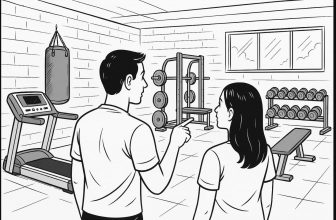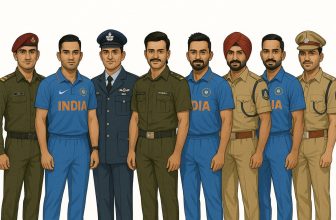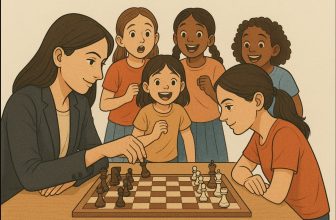India has given the world some of its finest athletes, but behind the medals, records, and victories lie stories of struggle, sacrifice, and unyielding determination. Many of these champions were born into extreme poverty, where affording a pair of shoes or a proper meal was a luxury. They trained on dusty roads, in makeshift arenas, or with second-hand equipment, but their hunger to succeed was far greater than the hardships they endured.
Despite facing financial hardships, societal barriers, and limited resources, these athletes refused to give up. Their relentless pursuit of excellence rewrote history—not just for themselves, but for an entire nation that now looks up to them as symbols of hope and perseverance.
This article highlights 10 extraordinary Indian athletes who overcame extreme poverty to reach the pinnacle of success. Their journeys prove that greatness isn’t about where you start, but how far you are willing to go.
1. Milkha Singh (Athletics) – From Partition Orphan to India’s Greatest Sprinter
Milkha Singh lost his entire family during the Partition of India in 1947. Arriving in India as a refugee, he lived on the streets, sometimes stealing food to survive. He attempted to join the army thrice before getting selected. It was in the army that his running talent was noticed. With sheer determination and training, he became one of the world’s best sprinters, winning four Asian Games golds and finishing fourth at the 1960 Olympics—India’s closest brush with an Olympic sprint medal. His life story inspired the Bollywood film Bhaag Milkha Bhaag.
2. Mary Kom (Boxing) – The Daughter of Farmers Who Fought Her Way to the Top
Mary Kom grew up in a poor farming family in Manipur, where her parents barely earned enough to feed their children. She trained in secret, fearing her father’s disapproval of boxing. She practiced in makeshift gyms, punching homemade bags, and often skipped meals due to a lack of money. Despite the struggles, she became a six-time world champion and an Olympic medalist, proving that even a girl from a remote village could rule the world of boxing.
3. Hima Das (Athletics) – The Farmer’s Daughter Who Became India’s Sprint Queen
Hima Das was born in a rice-farming family in Assam, where daily survival was a challenge. She trained barefoot on village roads because she couldn’t afford proper shoes. She ran on muddy fields, helping her family with farming work. Against all odds, she became the first Indian woman to win a gold medal in a global track event, at the IAAF World U20 Championships. Her story continues to inspire millions.
4. Dutee Chand (Athletics) – The Weaver’s Daughter Who Became India’s Fastest Woman
Dutee Chand was born in a poor family of weavers in Odisha. She grew up in a small hut and often ran barefoot due to a lack of proper running gear. Despite financial hardships and societal struggles, she trained relentlessly and became one of India’s fastest sprinters. She later fought a historic battle against gender regulations in athletics and won. Today, she is one of the most celebrated Indian athletes on the global stage.
5. Sushil Kumar (Wrestling) – From a Mud Akhara to Olympic Glory
Sushil Kumar was born in Najafgarh, Delhi, in a lower-middle-class family. His family could barely afford one proper meal a day, yet he trained in traditional mud akharas (wrestling pits). With limited facilities and minimal diet, he still worked hard. His perseverance led him to win India’s first two Olympic medals in wrestling, making him a national icon.
6. Budhia Singh (Marathon Running) – The Child Prodigy Who Ran for Survival
Budhia Singh was born into extreme poverty in Odisha. He was sold by his mother to a trader for ₹800 ($10), but was later rescued by a judo coach. He trained him as a long-distance runner, and at just four years old, he ran 48 marathons! However, controversies cut his career short. Despite this, his early journey remains one of the most incredible stories of survival through sports.
7. Bajrang Punia (Wrestling) – The Farmer’s Son Who Became a Wrestling Star
Bajrang Punia, born into a farming family in Haryana, trained in poor conditions with minimal resources. His father, a wrestler, worked hard to support his son’s training, but financial struggles often meant skipping meals or training without proper gear. Bajrang’s sheer dedication led him to Olympic glory, making him one of India’s top wrestlers.
8. Rani Rampal (Hockey) – From a House with No Electricity to India’s Hockey Captain
Rani Rampal’s family lived in a small, one-room house with no electricity in Haryana. Her father was a cart puller, and her family couldn’t afford basic necessities, let alone hockey equipment. She trained with broken sticks and played barefoot. Despite all odds, she became India’s women’s hockey captain, leading the team to historic victories and proving that dreams have no boundaries.
9. Tulsidas Balaram (Football) – A Slum Kid Who Became a Football Legend
Tulsidas Balaram was born in a slum in Secunderabad, where his family struggled to eat two meals a day. He played football without shoes, using makeshift balls. Despite battling malnutrition, he became one of India’s finest footballers, leading India to glory in the 1962 Asian Games. He is still regarded as one of the best Indian footballers of all time.
10. Rajendra Singh Rahelu (Para Powerlifting) – Strength Beyond Limits
Born into a poor family in Punjab, Rajendra Singh Rahelu contracted polio at eight months old. Despite financial and physical challenges, he took up powerlifting and worked hard to overcome his limitations. His persistence led him to win a bronze medal at the 2004 Paralympics, proving that no obstacle is too great to conquer.
Summary: A Story of Grit and Triumph
Each of these athletes turned their hardships into stepping stones toward greatness. Born into financially struggling families, they had no privilege, no safety net—only an unbreakable spirit and a dream too big to be crushed by poverty.
From Milkha Singh, a Partition refugee who ran barefoot to become India’s greatest sprinter, to Mary Kom, who trained in secrecy because her family couldn’t afford her boxing gear, these athletes fought against hunger, rejection, and unimaginable struggles. Some worked odd jobs to support their families, while others trained in harsh conditions without proper equipment—but none of them gave up.
Their journeys are not just sports stories; they are lessons in resilience, discipline, and self-belief. They prove that poverty is not a limitation, but a challenge to be conquered. Their victories belong not just to them, but to every Indian who dares to dream against the odds.





